- Home
- P. T. Deutermann
The Commodore Page 14
The Commodore Read online
Page 14
He paused to take a breath. “Now, there’s a ‘but,’ and it’s a huge ‘but.’ We have radar, and that can even things up a lot, in my opinion. No more of these opposing formations blundering into each other in the dark. Last night the cruisers opened fire at eleven miles instead of two miles like at the first Savo. They didn’t start shooting until our fish had started blowing ships up. I suspect it confused the hell out of the Japs. They knew there were American destroyers within five miles of them, but then six-inch started landing on them from over the visible horizon. This is not to say that they’re not up there tonight in Rabaul analyzing what happened, which means, next time, we’ll have to innovate again. It’s that kind of war out here. You will see that the one thing my SOP does not talk about is tactics. In my opinion, that will be a work in progress until we’re anchored in Tokyo Bay.”
He looked around the table. “Okay—there endeth the lesson. Go back to your ships and get ready to go out sometime tonight. No specific threat, but the admiral wants his destroyers out there on the prowl in case the coast watchers have missed something. Welcome to the South Pacific.”
After the meeting, Sluff had Old Mose bring him dinner in his cabin, after which he lay down for a few minutes. An hour later someone was knocking on the cabin door, and then the exec came in.
“Commodore,” he began. Sluff groaned theatrically.
“The division has been directed to conduct a radar sweep of Ironbottom Sound commencing at twenty-two hundred. No specific threat or coast-watcher reports.”
“The cruisers staying in?”
“Yes, sir. Apparently they need their beauty sleep.”
Sluff grinned. “Okay, good, this will give us a chance to shake out the new guys, see how they do. And, listen: Silence on the coast-watcher nets can mean everything from the Japs taking a rope yarn Sunday to an undetected battleship formation coming to tear up Cactus. We’ll up anchor at twenty-one thirty.”
“Twenty-one thirty, aye,” Bob said. “Operational speed?”
“Twenty-seven knots until midnight. Then I want four boilers available.”
Bob grinned. “You think they’re coming, don’t you.”
“Actually,” Sluff said, “I do.”
By midnight they were in a column formation, thousand-yard intervals, and headed north up into the Slot. All four ships had been brought to general quarters. It was a typical Solomons night: a low overcast, scattered rainsqualls, humid to the point of fogged-up binoculars, darker than the familiar well digger’s ass, and hot. The radar picture was extremely good, as the microwave signals were ducted along the surface by the wet blanket of clouds above. Down below in the four main holes, the engineering plant was almost unbearably hot with all four boilers on the line. Sluff had the formation steaming at twenty-five knots, if nothing else but to generate some relative wind to cool the topside GQ stations, where everyone was encased in kapok life jackets, steel helmets, and, for the gunners, flash-proof gauntlets and hoods. General quarters, my ass, Sluff thought. Sauna quarters was more like it. It felt like his helmet was sweating.
He’d brought the division to condition I at midnight. It was a bit ludicrous, Sluff thought. If the Japs wanted to run a mission on Guadalcanal, they had this small window of operational opportunity dictated by simple geography. It amazed him how every aspect of this surface war already was subsiding into almost predictable routine. The red light on the bitch-box snapped on.
“Captain, Combat, radar contact, bearing three three zero, range twenty-five thousand yards, composition two large, six small, course one six zero, speed thirty-two. Looks like three destroyers ahead, two cruisers, then three destroyers astern.”
Well, well, well, Sluff thought. “Combat, Commodore: Alert the division by TBS, get a radar confirmation from one other ship, then set us up on a course to cross their T, reduce speed to twenty knots, and prepare for a torpedo attack.”
“Combat, aye.”
Crossing the T: the tactic by which one force aligned itself perpendicular to the approaching enemy column, the theory being that the force crossing the T could bring all weapons, guns or torpedoes, to bear on the enemy column, while the enemy could only bring the weapons of the first ship in the column to bear against the other force.
“Commodore, Combat, Malone and Evans confirm the contact. Stayers does not hold yet. Ordering course zero seven zero, speed two-zero now.”
“Very well,” Sluff said. “Intercept range is to be at six thousand yards, torpedoes running on high speed, shallow depth. Tell all ships to fire a pattern of eight torpedoes.”
“Combat, aye, and we’ll have to slow down even more to make that geometry work—the Japs are going too fast.”
“Order what you need, Bob. And get an oboe out to Sixty-Four Point Two that we’re engaging and what our posit is. Then tell the division to start shooting when they see our torpedoes hitting.”
Sluff heard the formation-maneuvering orders going out over the TBS speaker above his head. It took an effort not to get out of his chair as he felt the ship slowing down, but there was nothing to see. He had to trust the ship behind King to get the message and not run over the top of them. He was totally dependent on the exec and his plotting team to compute the setup and then pass firing orders to the torpedo mounts. Six thousand yards was the maximum effective range of the Mark 15 destroyer torpedo. That was closer than he wanted to be when the fish went off, but he didn’t want to take a chance by firing the torpedoes at their slow speed and have the damned Japs change course while the fish were en route. This way, the fish would be going almost fifty miles an hour against targets that were going forty miles an hour right at them. Once fired, they’d collide in just less than 120 seconds.
Then what, he thought. Guns for ninety seconds, then bolt straight ahead at thirty-two knots on the current course to get out of torpedo water? Reverse course and accelerate? Don’t shoot at all, and thus stay dark, turn together to the south and run like hell? Two cruisers, six destroyers; those were tough odds. Thirty-two torpedoes might thin them out some, assuming the fish worked, but still, two cruisers were a handful.
There was one final option: Launch the fish, wait for them to start hitting, and then turn left down the torpedo-firing bearing and run right at the Japs at maximum speed. Or almost right at them—offset to one side or the other, scream past them at two thousand yards, and open with all twenty guns. They’d never expect that, and his four tin cans would be going by them so fast that their torpedoes would be useless. After that, assess the damage done, and either “skedaddle” as the admiral called it, or circle around the damaged ships like a bunch of Comanches and shoot ’em up until things got too hot.
“Commodore, Combat, launching now on bearing three one zero, current range eight thousand five hundred, intercept range five thousand eight hundred.”
“Okay, here’s what I want,” Sluff said. “Put out an execute to follow. Three one zero corpen, speed three-two. Open fire on my command.”
Bob repeated the orders back. The corpen signal meant that the lead ship, King, would turn left to the new course when the signal was executed, and each following ship would turn in succession in an accelerating follow-the-leader formation. Sluff vaguely heard torpedoes going over the side to port, but his mind was concentrating on the tactical geometry. He’d ordered a ten-degree offset because he did not want to lead his column directly into the Japanese formation, if nothing else to avoid the risk of collision with undamaged Jap ships going thirty-plus knots. The TBS came to life with the execute-to-follow signal.
“Intercept time, fifty seconds.”
Sluff turned to the OOD. “Mister Heimbach, alert main control we’ll need thirty-two knots in about one minute.” Then he called Gun Control to confirm that his director was locked on the enemy column. Billy Chandler reported that they were locked on to the fourth ship in the column. He waited a few seconds and then ordered Combat to execute the formation course and speed change. He heard the forced-draft blowers s
pooling up almost immediately, and King began her squirming rumble as she gathered speed.
The fourth ship—that should be the first cruiser, Sluff thought. That would leave the three Jap destroyers leading the cruisers out of the gunnery barrage. On the other hand, they would be the first to face the torpedo barrage coming at them right about—
The night sky lit up in a series of four large explosions, followed by a twenty-second pause and then two more fireballs. The explosions were close enough to white out his night vision, but he could still see that his column was going to pass within about two thousand yards of the enemy formation. He couldn’t make out which types of ships had absorbed torpedo hits, but there were definitely four distinct fires out there. He also saw that the bearing rate was accelerating as his division sped up. Time to do it.
He picked up the TBS handset next to his chair and, using his ComDesDiv 212 call sign, ordered all ships to commence firing. King’s own guns jumped into action with what looked like oversized muzzle flashes, followed by the usual cloud of burnt wadding and gunsmoke whipping through the bridge portholes. He jumped out of his chair, went out to the port bridge wing, and looked aft. Behind King he could see a line of five-inch muzzle flashes banging away into the night. He swung his binocs to the right and observed a stream of red-hot projectiles arcing flat over the water and crashing down into black objects a mile away. It looked like the Jap formation had fallen apart, but with the two columns passing each other in opposite directions, King’s forward two guns were inexorably training aft to keep on target. Time for a course change.
He went back inside the pilothouse, where the smoke and debris from the two forward mounts was creating a minor fog, and hit the bitch-box, ordering Combat to bring the formation to the left thirty degrees. Once the immediate-execute signal went out and King began to turn left, he picked up the TBS handset and ordered an all-ships cease-firing. Right about now the Japs would be training out their own torpedo mounts and guns, aiming at the line of gun flashes created by twenty five-inch guns in rapid-continuous-fire mode. So: This should work, he thought. A high-speed course change to the left, maintain high speed, maximize the change in bearing to the enemy formation.
“Commodore, Combat, recommend a second course change to the left, to two four zero, to keep the Japs in torpedo range.”
“Great minds think alike, Bob. Let’s run on this for two minutes, then do that and set up to shoot the remaining torpedoes.”
“Combat, aye, and reopen fire once the fish go in?”
“That’s affirmative.”
He closed his eyes to frame the tactical plot in his mind as the relative wind from their high speed cleared the fog out of the pilothouse. They’d raced by the Jap formation going just a bit north of east, firing as they went. Then they’d changed course to due north, ceased firing to make themselves invisible again while opening the range and fouling the Japs’ torpedo calculations. Now they should swing left again, this time to the southwest, and make a firing pass down the Japs’ western flank, all at ranges between three thousand and five thousand yards. As soon as they steadied on the new course, he’d order the guns to go back to work and then let each of his four ships fire off their remaining two torpedoes at whatever targets they chose.
He heard the immediate-execute course change go out over TBS and felt King heel sharply as she came about and headed down a line behind what was left of the Japanese formation. There were now five distinct fires burning out there in the darkness, but without being able to actually look at the radarscope picture, he had no idea of how many Jap ships were still operational. As King settled back upright, steady on 240, he found out that at least one Jap cruiser was still in the game as nine waterspouts boomed into the air about five hundred yards on their port beam.
Somehow, the Japs knew where they were. He grabbed the TBS again and ordered the division to resume firing. He told his gunnery officer to concentrate on whatever ship was firing six-inch shells at King if he could. He went back out to the port bridge wing to see if he could make out the cruiser, which should be about two miles away on their port beam. Once again he was enveloped in gunsmoke, clouds of burnt wadding, and the hammering blasts of his own five-inch guns working overtime. At thirty-two knots, they’d be past the enemy formation very soon, and either firing over their shoulders or executing another turn in the Comanche circle.
Another nine-pack of six-inch ripped overhead and landed on King’s starboard side, closer than the first salvo. He clearly saw the cruiser’s gun flashes this time, as well as several others out there in the darkness.
They’re getting the range, he thought. Next salvo will split the difference and maybe also King’s paper-thin steel sides. Not to mention the Long Lances that were probably coming.
Maneuver, now.
He ran back into the pilothouse, grabbed the TBS handset, and ordered a simultaneous turn to port to a course that would take them directly at the Japs. As the ship swung around in another tight arc to the left, the constellation of distant gun flashes began to move across the night horizon in the opposite direction. A moment later all four ships of his division were racing directly at the Jap formation, which now seemed to cover an arc of almost ninety degrees directly ahead based on the gun flashes. The maneuver meant that the Americans could only use their forward two guns against the Japs, but it also meant a much better launch angle for the division’s torpedoes. As he was about to tell Combat to let them go, he felt the percussion thumps back down on the 01 level as King’s last two fish whooshed off into the night. He picked up the TBS handset again.
“All ships maneuver independently to go through the Jap formation. Fire at will. Once we clear their formation, I plan to skeee-daddle to the southeast.”
By now he could see three separate ships dead in the water ahead on fire from stem to stern. One looked like one of the cruisers. The other cruiser let go a nine-gun salvo right at the King but all the shells racketed overhead. With King and the other ships racing right at them at thirty-two knots, the Japs’ fire control couldn’t correct for the rapidly decreasing range. Sluff realized that, in a moment, the division would be inside the Jap formation, making it impossible for the Japs to shoot without hitting their own ships, while at the same time the Americans could shoot in all directions. He yelled at the OOD to steer directly astern of the cruiser that was firing at them while watching King’s own projectiles crashing into her midsection, sending red-hot shrapnel and other objects flying off the cruiser in all directions.
Another nine-gun salvo bloomed right in their faces, and this time something hit mount fifty-one with an ear-hammering clang, visibly knocking the mount sideways. Mount fifty-two kept on firing, its barrel swinging rapidly to the left as King passed no more than a few hundred yards from the outraged cruiser, at which point all of King’s guns could be brought to bear. Sluff tried to think about what his next order should be, but the chaos of a close-in gunfight mesmerized him. The cruiser’s secondary armament, five-inchers like King’s, was shooting at them now, and Sluff felt two more hits somewhere aft. Hits, but not explosions—they were too close in now and the Japs’ shells hadn’t had time to arm. The same was true of King’s own guns, and he could actually see his own ship’s shells bounce off the cruiser’s armored side and go spinning off into the darkness like frustrated red hornets.
And then the night exploded into a sunrise of white fire, followed by a tremendous noise and a sudden hot pressure wave that enveloped the bridge. Sluff was flung back against the director barbette’s foundation. He was vaguely aware that three of the bridge GQ team had been punched back into the pilothouse like rag dolls, their wide eyes clear evidence of the shock of the explosion. He sat down suddenly as his legs failed him, aware that the ship was still going ahead. He could feel the deck vibrating with the thrust of two propellers thrashing at full power. He dimly heard Combat calling him on the bitch-box from inside the pilothouse, and then hands were reaching for him and pulling him to his feet.
>
He grabbed the bull rail on the port bridge wing and looked aft. The cruiser was gone, replaced by a stub of a bow literally bobbing up and down in a maelstrom of flaming fuel oil, steam, and red smoke. He realized she had blown up, disintegrating right in their faces. They must have penetrated one of her Long Lance magazines.
He stumbled into the pilothouse, grabbing various stationary objects to keep himself upright, and barely got to his captain’s chair. He tried to get up into the chair but it swiveled away from him and a quartermaster had to help him up.
“Combat, Commodore,” he said, his voice a raspy squawk. “Give me the picture.”
“Combat, aye, and we’re clearing the Jap formation. What happened out there?”
“Cruiser blew up. Magazine explosion. She’s gone. Where’s the division?”
“Forming behind us as we open the range. Our radar track shows all our ships are still making thirty-two knots, so it looks like we pulled it off.”
“Okay, immediate-execute a column movement to the southeast, back towards Tulagi. Advise if you think the Japs are coming after us. Make a major course change to the east two minutes after we settle on the escape course. Maintain thirty-two knots: I sense Long Lances are coming after us right now.”
“Combat, aye. DC Central has damage reports when you’re ready. Gun Control has lost comms with mount fifty-one, and fifty-two is reporting bodies out on the forecastle.”
Sluff sighed as he felt the adrenaline in his system beginning to subside. He put his head back in the chair and closed his eyes, but then a voice told him to wake up: This isn’t over until we’re clear of pursuing torpedoes. Then he had an idea.
“Combat, Commodore: Who’s the last ship in the column?”
“Evans, sir.”
“Direct Evans to begin dropping depth charges, set for fifty feet, one every thirty seconds.”
“Combat, aye, and, be advised, no Jap ships are headed our way. I think they’ve had enough fun for one night.”

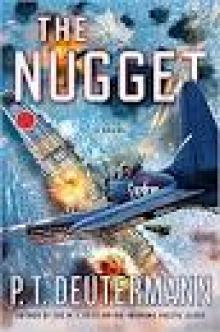 The Nugget
The Nugget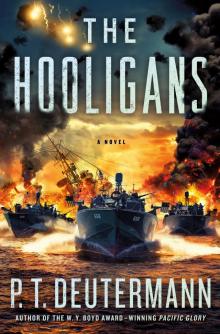 The Hooligans
The Hooligans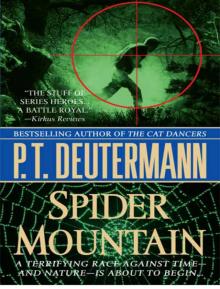 SPIDER MOUNTAIN
SPIDER MOUNTAIN![Cold Frame [retail] Read online](http://i1.bookreadfree.com/i/03/19/cold_frame_retail_preview.jpg) Cold Frame [retail]
Cold Frame [retail] Sweepers
Sweepers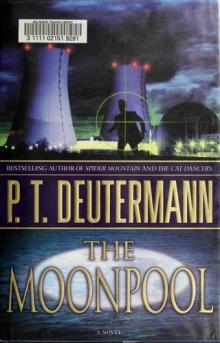 Cam - 03 - The Moonpool
Cam - 03 - The Moonpool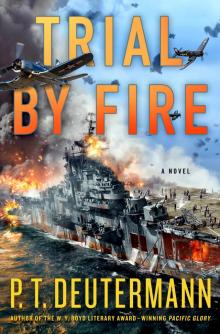 Trial by Fire
Trial by Fire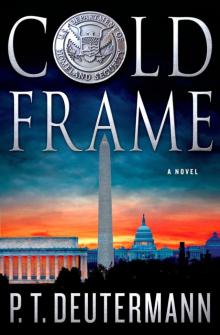 Cold Frame
Cold Frame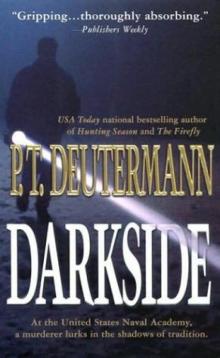 Darkside
Darkside Cam - 04 - Nightwalkers
Cam - 04 - Nightwalkers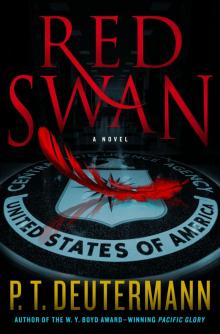 Red Swan
Red Swan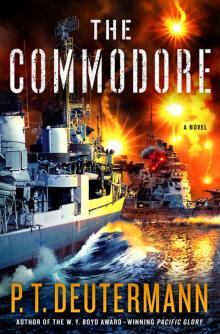 The Commodore
The Commodore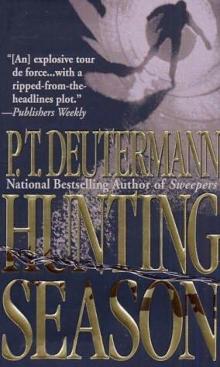 Hunting Season
Hunting Season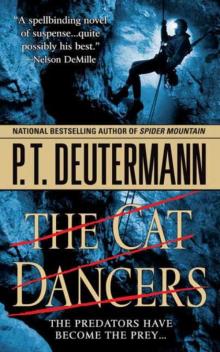 The Cat Dancers
The Cat Dancers Scorpion in the Sea
Scorpion in the Sea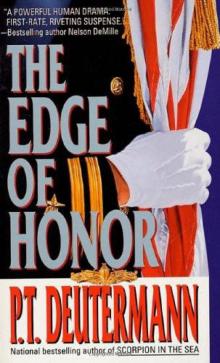 The Edge of Honor
The Edge of Honor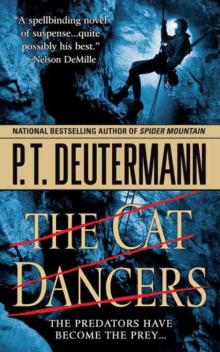 The Cat Dancers cr-1
The Cat Dancers cr-1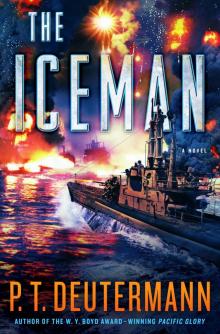 The Iceman
The Iceman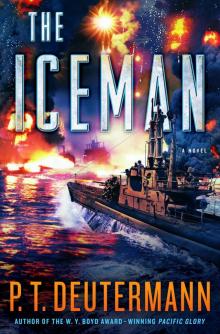 The Iceman_A Novel
The Iceman_A Novel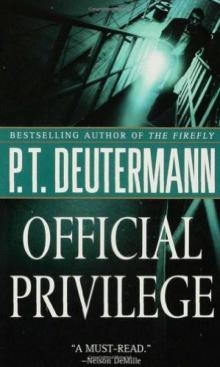 Official Privilege
Official Privilege Sentinels of Fire
Sentinels of Fire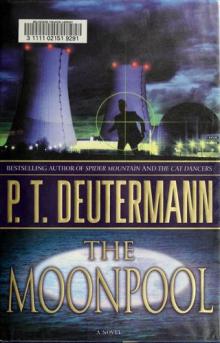 The Moonpool cr-3
The Moonpool cr-3 Nightwalkers cr-4
Nightwalkers cr-4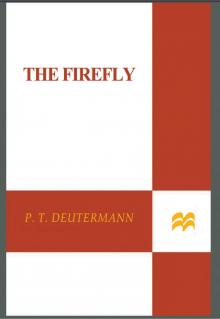 The Firefly
The Firefly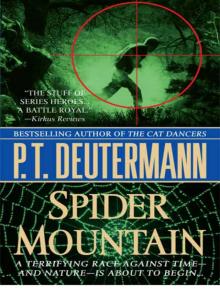 Spider mountain cr-2
Spider mountain cr-2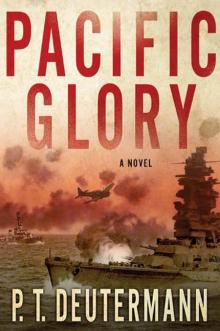 Pacific Glory
Pacific Glory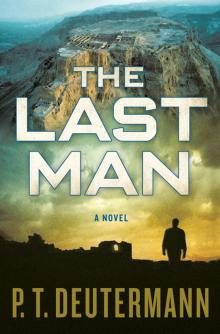 The Last Man
The Last Man